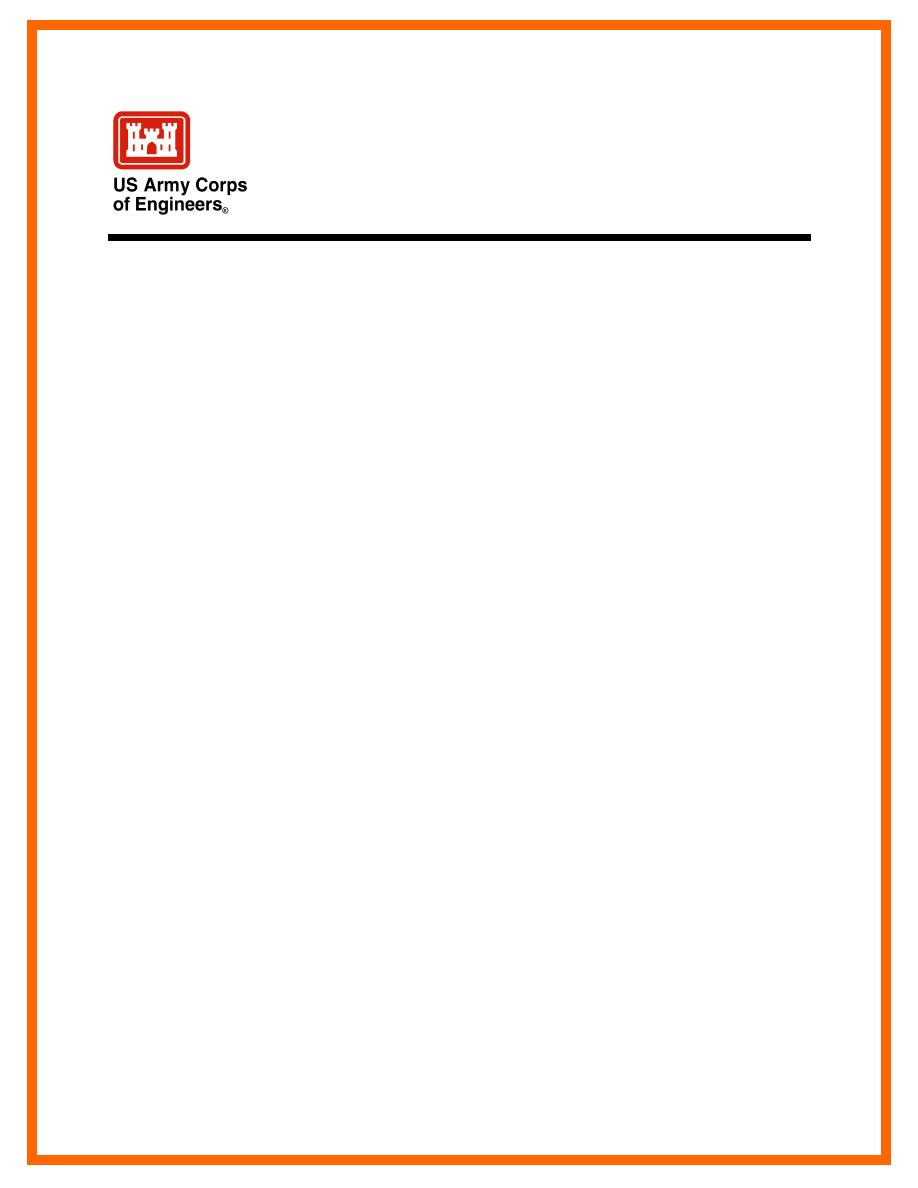
ERDC/CHL TN-IV-22
December 1999
Shoal-Reduction Strategies
for Entrance Channels
by Julie Dean Rosati and Nicholas C. Kraus
PURPOSE: The Coastal Engineering Technical Note (CETN) described herein presents several
methods for reducing sediment shoaling in navigation channels at coastal inlets and entrances.
BACKGROUND: From fiscal year (FY) 1995 through 1998, the US Army Corps of Engineers
(USACE) dredged between 200 and 300 million m3/yr from Federal channels. Maintenance
dredging accounted for an average of 89 percent of this volume, and new work and emergency
dredging comprised the remainder. Total dredging expenditures increased from approximately
2 to 3 million in FY 1995 through FY 1998, with maintenance dredging accounting for
78 percent of the cost (see U.S. Army Corps of Engineers Navigation Data Center Long-Term
Dredging web site at http://www.wrsc.usace.army.mil/ndc/ddhisbth.htm). A reduction in
maintenance dredging can represent a significant cost and timesaving measure to the operation
and maintenance of USACE waterways.
The focus of this CETN is how sediment shoals into open-coast channels. The primary
sediment-transport pathways can be referenced to the jetties stabilizing the inlet entrance.
Sediment can move around the tip of a jetty, entering directly into the channel; around the tip of
the jetty, on to the ebb shoal and into the portion of the channel that transverses the ebb shoal,
through a jetty, over a jetty, and around the landward side (see green arrows in Figure 1). Pope
(1997) gives a classification system of channel shoaling based on general considerations of
geomorphology.
METHODS FOR REDUCING SEDIMENT SHOALING: The following paragraphs give
strategies for reducing sediment shoaling at inlet entrance channels.
Anticipate and budget for potential changes in channel shoaling patterns and
volumes
Sudden shoaling of navigation channels is often related to storms, antecedent events, and channel
bathymetry. Increases in expected dredging quantities and changes in shoaling patterns can occur
because of an intense storm season. Storms can increase the rate of material transported
alongshore and into the channel, while causing shoreward transport of inlet deltas or the partial
breakup of deltas. For rivers feeding inlets, rainfall over the watershed can increase the sediment-
laden flow into the inlet. These processes are not fully predictable but can be anticipated to some
degree by reviewing long-term (decades to centuries) cycles of climatic and inlet behavior.
Whether increased shoaling by storms occurs depends in part on the state of the bottom
topography at the time of the storms.
1


 Previous Page
Previous Page
